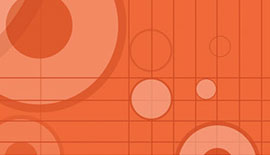Advances in Sorting Techniques
Cell sorting has diverse applications in life science research, with uses ranging from routine sorting of transfected cells to the separation of different types of cancer cells based on subtle physiological differences. Cells may be sorted to create homogenous subpopulations of interest based on properties such as relative cell size, relative cell complexity, and the use of fluorescent labeling to distinguish cells.
Cell Sorting Methods
There are a number of different methods for cell analysis; the oldest is the Coulter principle, which measures a change in impedance to determine particle volume and is still used for counting and sizing. Analytic techniques were later supplemented by preparative techniques such as magnetic separation using magnetically labeled antibodies to separate cells in bulk. Magnetic cell separation must be done using extracellular markers and typically can be done using positive selection or the depletion of unwanted cells. This technology can only sort based on one positive parameter, for example, the presence of a magnetic particle coupled to one or more antibodies. Using cell sorting based on flow cytometry enables cell identification and cell sorting at the individual cell level. Fluorescence-activated cell sorting, also known as fluorescence-assisted cell sorting, allows for several parameters to be used to identify the cells of interest, and single-cell sorts can be performed.
Identifying Cells for Fluorescence-Activated Cell Sorting
Automated cell sorters like Bio-Rad's S3 Cell Sorter can sort cells based either on cellular properties or by fluorescent labeling. Forward scatter (FSC) is used to determine approximate cell size, whereas side scatter (SSC) can be used to determine relative cellular complexity. Cells can either express fluorescent proteins such as GFP and mCherry or be labeled with fluorescently tagged antibodies, both extracellularly or intracellularly. The ability to sort cells based on physical characteristics and their fluorescent label signatures makes it possible to isolate well-defined subpopulations of cells more easily than with other separation methods previously mentioned.
As sorting technology has become more sophisticated and more ubiquitous in research applications, diverse cell labeling reagents have become available. Many fluorophores are now available, creating multiple options for panel design for cellular analysis or sorting, allowing for better identification of cell subpopulations. Complex cell sorters can perform up to six-way sorting using up to 15 colors with seven lasers. Cells bearing unique fluorescent labels can be separated with high precision from other cell types within a heterogeneous population.
Advantages of Automated Fluorescence-Activated Cell Sorting
When comparing cell sorters, consider both the level of automation and long-term cost of ownership in terms of initial investment, ongoing costs including labor, and the number of hours required to complete sorting jobs at core facilities. A major advantage of a compact fluorescence-activated cell sorter such as Bio-Rad's S3 Cell Sorter is that the level of automation is much higher than that of the larger and more complex sorters typically found in a core lab facility. The S3 Cell Sorter features automated setup including drop delay calculation and real-time droplet break-off monitoring. This combination of features significantly reduces the amount of training required and makes the sorter more accessible to users with basic flow cytometry experience. The automation within the workflow optimizes experimental time by providing easier setup and provides confidence that cells are sorted with high purity and yield.
In flow core laboratories, the S3 automated benchtop cell sorter reduces the required hands-on time for specialized technicians, freeing their time for more complex tasks.
Bio-Rad's S3 Cell Sorter is the first truly walk-up and walk-away cell sorter that has automated setup, automatic drop delay optimization, and real-time droplet break-off monitoring. There are also a range of reagents available for different types of fluorescence-assisted cell sorting protocols. Discover how the S3 Cell Sorter can fit into your fluorescence-activated cell sorting workflow.
Companion Products

Cell Sorting

Cell Transfection

Cell Counting and Imaging
Related Topics

How A Flow Cytometer Works
We take a look inside a flow cytometer and explain how the three main components work.

Hemocytometer vs. Automated Cell Counter
An automated cell counter can provide accurate cell counts for a wider concentration range than a hemocytometer.

Biotechnology Equipment
Since 1952, Bio-Rad Laboratories has developed, manufactured, and distributed biotechnology equipment and consumables for scientists and clinicians worldwide.

